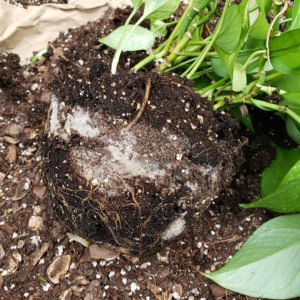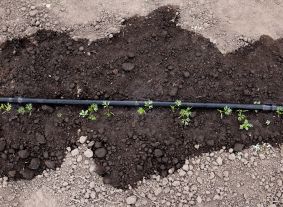Dealing with Mold on Indoor Seeds
Views: 3566

Some plants can take the cold and inconsistent weather typical of spring. And this spring has been chillier than most. Those seeds and plants that are up to the job can be sown directly in the ground. I planted several rows of spinach, lettuce, chard, and beets directly into the ground back on April 5 and 11. And two to three weeks later, all those rows have something to show for themselves.
But some plants just can’t take the cold. They thrive in warmth. Some even thrive in hot, hot, hot weather. If we threw them out on a 40-degree day, they’d revolt. And those are the ones whose seeds I’ve decided to start inside.
Think of the plants in a garden that just grow like crazy in August: tomatoes, squash, peppers, beans, melons.
Here’s the list of what I sowed on April 14: Vermont Cranberry bean, Rond de Nice squash, Tasty Green burpless cuke, Heavyweight II bush snap bean, Red Bull red pepper, Spanish Padron tapas pepper, Jalafuego jalapeño, Da Vinci melon. I also planted some Bling Bling zinnias and Field of Dreams ornamental corn. Thats right, ornamental corn. It’s a brand new variety and not meant for ear production.
Within five days, I had some signs of action in the cells. The first to pop up were the zinnias, followed by the Vermont Cranberry beans and the Rond de Nice squash. The ornamental corn and cukes also are showing some signs of germination. The most vigorous growth so far has been with the zinnias.
Mold on my Cow Pots
Something else has been growing, too: mold. I first noticed a thin white fuzziness growing on the top of the soil in one of the cells about a week ago. And like all molds, it spread. Not too quickly, which is good. But I also noticed it growing on the actual container. As a reminder, these are Cow Pots, a container made out of fiber.
Luckily, as part of my day job, I have Facebook friends who are entomologists, plant pathologists and commercial growers and they just LOVE diagnosing gross-looking things that prey on your garden.
What to do
Within a few hours of posting the above photo, I learned this: Most likely it is a common mold fungi. Think of this as being like bread mold. It’s in the air and is not an avoidable thing, said my pathologist friend. And since the pot is a carbon source, the mold finds it attractive.
Prognosis? I was told that sunshine is the best fix for this.
With the spring we’ve been having, that’s not going to happen any time soon, so I’m letting the pots dry out a bit.
Luckily, this saprophytic mold will not hurt the plants, and it eventually will run its course. Good, because I refuse to let my first attempt at seed starting end with a mold invasion.
Meet Ellen Wells
When you’re raised on a farm, you can’t help but know a thing or two about gardening. Ellen Wells is our expert on edible gardening.…
Ellen's Recent Posts

Asparagus






